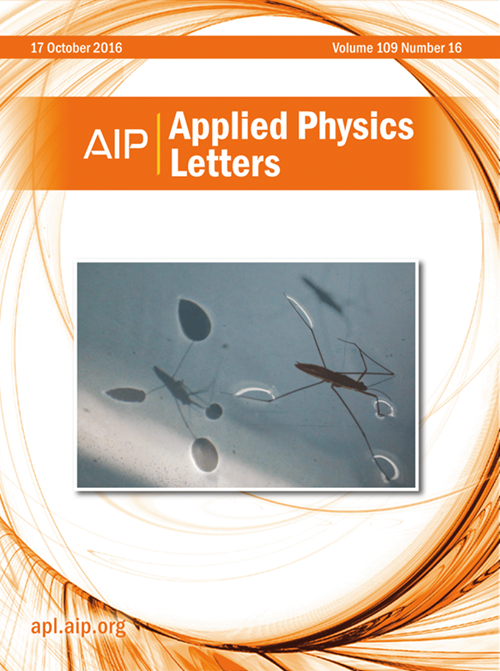Adjusting Schottky barrier height and enhancing diode performances in 1T-MoT2/WSeTe (MoSeTe) heterojunctions by interlayer flipping
IF 3.5
2区 物理与天体物理
Q2 PHYSICS, APPLIED
引用次数: 0
Abstract
Two-dimensional (2D) Janus materials have received significant attention due to their unique physical structure and superior electronic and optical properties. Here, we investigate the diode performance of 2D Janus WSeTe or MoSeTe vertical contact with 2D 1T-MoTe2 using ab initio quantum transport simulations. When the Te atomic layer of WSeTe or MoSeTe contacts with 1T-MoTe2 (known as type-A heterojunction), the contact interface exhibits significant Fermi level pinning (FLP), resulting in a larger Schottky barrier height (SBH). Through interlayer flipping, the Se atomic layer of WSeTe or MoSeTe comes into contact with 1T-MoTe2 (known as type-B heterojunction), FLP at the contact interface will be significantly suppressed, resulting in obvious reduction of the SBH. Therefore, Schottky diodes based on type-B heterojunction exhibit superior performances with higher rectification ratio and larger photocurrent compared to Schottky diodes based on type-A heterojunction.利用层间翻转调整1T-MoT2/WSeTe (MoSeTe)异质结的肖特基势垒高度和提高二极管性能
二维(2D) Janus材料由于其独特的物理结构和优越的电子和光学性能而受到了极大的关注。在这里,我们使用从头算量子输运模拟研究了二维Janus WSeTe或MoSeTe与二维1T-MoTe2垂直接触的二极管性能。当WSeTe或MoSeTe的Te原子层与1T-MoTe2(称为a型异质结)接触时,接触界面表现出明显的费米能级钉住(FLP),导致更大的肖特基势垒高度(SBH)。通过层间翻转,WSeTe或MoSeTe的Se原子层与1T-MoTe2(称为b型异质结)接触,接触界面处的FLP将被显著抑制,导致SBH明显降低。因此,基于b型异质结的肖特基二极管与基于a型异质结的肖特基二极管相比,具有更高的整流比和更大的光电流。
本文章由计算机程序翻译,如有差异,请以英文原文为准。
求助全文
约1分钟内获得全文
求助全文
来源期刊

Applied Physics Letters
物理-物理:应用
CiteScore
6.40
自引率
10.00%
发文量
1821
审稿时长
1.6 months
期刊介绍:
Applied Physics Letters (APL) features concise, up-to-date reports on significant new findings in applied physics. Emphasizing rapid dissemination of key data and new physical insights, APL offers prompt publication of new experimental and theoretical papers reporting applications of physics phenomena to all branches of science, engineering, and modern technology.
In addition to regular articles, the journal also publishes invited Fast Track, Perspectives, and in-depth Editorials which report on cutting-edge areas in applied physics.
APL Perspectives are forward-looking invited letters which highlight recent developments or discoveries. Emphasis is placed on very recent developments, potentially disruptive technologies, open questions and possible solutions. They also include a mini-roadmap detailing where the community should direct efforts in order for the phenomena to be viable for application and the challenges associated with meeting that performance threshold. Perspectives are characterized by personal viewpoints and opinions of recognized experts in the field.
Fast Track articles are invited original research articles that report results that are particularly novel and important or provide a significant advancement in an emerging field. Because of the urgency and scientific importance of the work, the peer review process is accelerated. If, during the review process, it becomes apparent that the paper does not meet the Fast Track criterion, it is returned to a normal track.
 求助内容:
求助内容: 应助结果提醒方式:
应助结果提醒方式:


